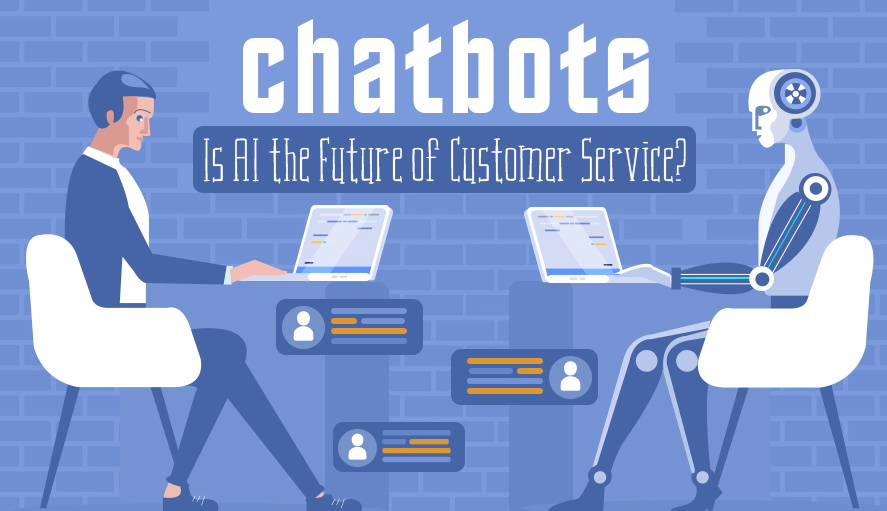Artificial Intelligence Trends In AI-Powered Chatbots For Customer Support
Artificial Intelligence Trends in AI-Powered Chatbots for Customer Support

Description
The integration of artificial intelligence into customer support systems has revolutionized how businesses interact with their customers. AI-powered chatbots have emerged as a critical tool for enhancing customer experience, streamlining operations, and reducing costs. These intelligent systems leverage advanced technologies such as natural language processing (NLP), machine learning, and sentiment analysis to provide personalized, efficient, and scalable support. This article explores the latest trends in AI-driven chatbots for customer support, highlighting their importance, benefits, and practical applications.
Enhanced Personalization Through Machine Learning
Modern chatbots are equipped with machine learning algorithms that enable them to analyze customer data and deliver highly personalized responses. By understanding user preferences, purchase history, and behavior patterns, these systems can tailor interactions to meet individual needs. This level of personalization not only improves customer satisfaction but also fosters brand loyalty.
Seamless Multilingual Support
With businesses operating on a global scale, multilingual capabilities have become a necessity. AI-powered chatbots can now communicate in multiple languages, breaking down language barriers and ensuring consistent support across diverse customer bases. This feature is particularly beneficial for companies with international audiences, as it enhances accessibility and inclusivity.
Proactive Customer Engagement
Unlike traditional reactive support systems, AI-driven chatbots can proactively engage with customers. By analyzing user behavior and identifying potential issues, these chatbots can initiate conversations, offer assistance, and provide solutions before customers even reach out. This proactive approach reduces friction and enhances the overall customer experience.
Integration with Omnichannel Platforms
AI-powered chatbots are increasingly being integrated into omnichannel platforms, allowing businesses to provide consistent support across various communication channels. Whether through websites, social media, or messaging apps, these chatbots ensure a unified and seamless experience for customers, regardless of the platform they use.
Advanced Sentiment Analysis
Sentiment analysis is a powerful feature that enables chatbots to gauge customer emotions during interactions. By detecting frustration, satisfaction, or confusion, these systems can adjust their responses accordingly, ensuring a more empathetic and human-like interaction. This capability is crucial for maintaining positive customer relationships.
Four Tips for Leveraging AI-Powered Chatbots in Customer Support
Focus on Continuous Learning
Regularly update chatbot algorithms with new data to improve accuracy and relevance. Continuous learning ensures that the system evolves with changing customer needs and preferences.Prioritize User Experience
Design chatbots with intuitive interfaces and clear communication styles. A user-friendly experience encourages customers to engage more frequently and effectively.Ensure Data Security
Implement robust security measures to protect customer data. Trust is a critical factor in customer support, and safeguarding sensitive information is essential for maintaining it.Monitor and Optimize Performance
Regularly analyze chatbot interactions to identify areas for improvement. Use metrics such as response time, resolution rate, and customer satisfaction to optimize performance.
Frequently Asked Questions
What are the key benefits of using AI-powered chatbots in customer support?
AI-powered chatbots offer numerous benefits, including 24/7 availability, faster response times, cost efficiency, and the ability to handle multiple queries simultaneously. They also provide personalized interactions and can scale effortlessly to meet growing customer demands.
How do AI chatbots handle complex customer queries?
Advanced chatbots use natural language processing and machine learning to understand and process complex queries. If a query exceeds their capabilities, they can seamlessly escalate the issue to a human agent, ensuring a smooth transition.
Can AI chatbots replace human customer support agents entirely?
While AI chatbots are highly efficient, they are not intended to replace human agents entirely. Instead, they complement human efforts by handling routine tasks, allowing agents to focus on more complex and nuanced issues.
What industries benefit the most from AI-powered chatbots?
Industries such as e-commerce, banking, healthcare, and telecommunications benefit significantly from AI-powered chatbots. These sectors often deal with high volumes of customer inquiries, making automation a valuable asset.
How can businesses measure the success of their AI chatbots?
Success can be measured using key performance indicators (KPIs) such as customer satisfaction scores, resolution rates, average handling time, and the number of successfully resolved queries without human intervention.
Are AI-powered chatbots cost-effective for small businesses?
Yes, AI-powered chatbots are cost-effective for small businesses. They reduce operational costs by automating repetitive tasks and can be scaled according to business needs, making them accessible to organizations of all sizes.
Conclusion
The adoption of AI-powered chatbots in customer support is transforming the way businesses interact with their customers. By leveraging advanced technologies such as machine learning, natural language processing, and sentiment analysis, these systems provide personalized, efficient, and scalable support. As the technology continues to evolve, businesses that embrace these trends will gain a competitive edge, delivering exceptional customer experiences while optimizing operational efficiency. The future of customer support lies in the seamless integration of AI-driven solutions, ensuring that businesses remain agile, responsive, and customer-centric in an increasingly digital world.
Comments
Post a Comment